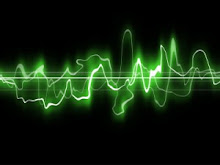I have already written here about Michael Gira (see 26th March) and was so intrigued by the way he managed to get so many twists and turns into his music that it was pretty well inevitable that before long I would plunge into the band for which, I gather, he is most famous – the New York experimental art rock band of the 80s and early 90s, Swans.
Like so many experimental musicians, Swans was a band that never stayed in the one place for long and, in some ways, their musical development was not unlike that of Einstürzende Neubauten, beginning with extremely harsh, industrial-peppered noise and, in time, mellowing their sound into something rather more acoustic and ambient, but still just as disturbing and confronting.
With just over two hours of music, their final album Soundtracks for the Blind, is a pretty mammoth listen. But it covers so much territory, sampling and building on pretty well every phase of this fascinating band’s musical lifespan, that even after 26 tracks, you feel not a moment of it has been wasted.
And yet it would be doing this album an enormous disservice to simply describe it as some sort of cobbled-together compilation of their earlier work. It’s an album which, even with its incredible diversity of music and styles, still has an amazing – epic, even – unity to it, as if to show us that all those strange bits and pieces that the band had been accumulating over the past fifteen or so years really did belong together after all. Soundtracks for the Blind is not just a survey of Swans’ work, but the consummation of it.
The music’s unity is characterised by a few things: its daringness, the enormous spaces it seems to invoke, the vastness of its sound, its cosmic darkness, the slowed-down grandeur of its beat – music that is no longer just rock, but now granite. It’s music that shows that there’s more than just one way to explore the shadows.
But, within all of that, there’s incredible diversity as well. There are soft moments, like the gently undulating opener, 'Red Velvet Corridor', sounding vast and shadowy, but in a way that makes you feel that this journey into the night is going to be a peaceful one. Which, of course, it’s not. It’s journey that is, at best, unnerving – at worst, downright terrifying.
There are the big epic tracks like ‘Helpless Child’ and ‘The Sound’, where Michael Gira’s dark voice, full of foreboding, alternates with long passages of monolithic instrumentals. There are creepy child-like vocals weaving their way through rich, thick oceans of sound in ‘The Beautiful Days’, while ‘I Love You This Much’ blasts out electronic clamour, turning feedback into a sinister flurry of sound, pounded with piercing spurts of noise. There are unusual, and unusually disturbing snippets of recorded messages in tracks like ‘I Was a Prisoner in your Skull’ and ‘Minus Something’; and there’s the grim and aptly titled closing track, ‘Surrogate Drone’ There are wonderful contributions from Jarboe, like her gruff and gritty voice against military drums and heavy bass guitars in the live ‘Yum-Yab Killers’.
Soundtracks for the Blind creates its vast and varied images through an incredibly powerful use of sound – sound where melody and rhythm have been pared down to their skeletal minimum, and where the bones that are left have instead been draped in thick, rich garments of sound, that grow and loom way, way above you casting shadows, frightening and awful.
It is an aptly titled album because the thing you most need to do to really appreciate Soundtracks for the Blind is to shut out everything around you, so that there is nothing left other than the music to weave its way into those dark, rarely touched, recesses of your mind, where even your eyes don’t let the light in.
Subscribe to:
Post Comments (Atom)


Great essay, Ian! This is one of my favorite albums from Swans and, like you, I have always felt that it serves as an excellent "capper" to their incredibly diverse body of work. I have always felt that this album (along with the live "Swans Are Dead") beautifully explores Swans' early brutality oddly filtered through their more ambient, folksy leanings from the early '90s. To me, it is like M. Gira had come full circle with his band after years of (fruitfully) wandering through the wilderness. The album really does manage to throw just about everything from their storied career at you, but with such focus and clarity - all of the old elements are present, but in a completely new (and wholly unique) form!
ReplyDeleteAnyway, just thought I'd put my two cents in...
Take care,
Steve
srgilliem@inbox.com
Hey thanks Steve - and, yes, my experience of this album is exactly the same as yours ... it's like revisiting the history of the band by having them write their autobiography for you - which, in a sense, is what this album is, I guess. Thanks for the post Steve!
ReplyDelete